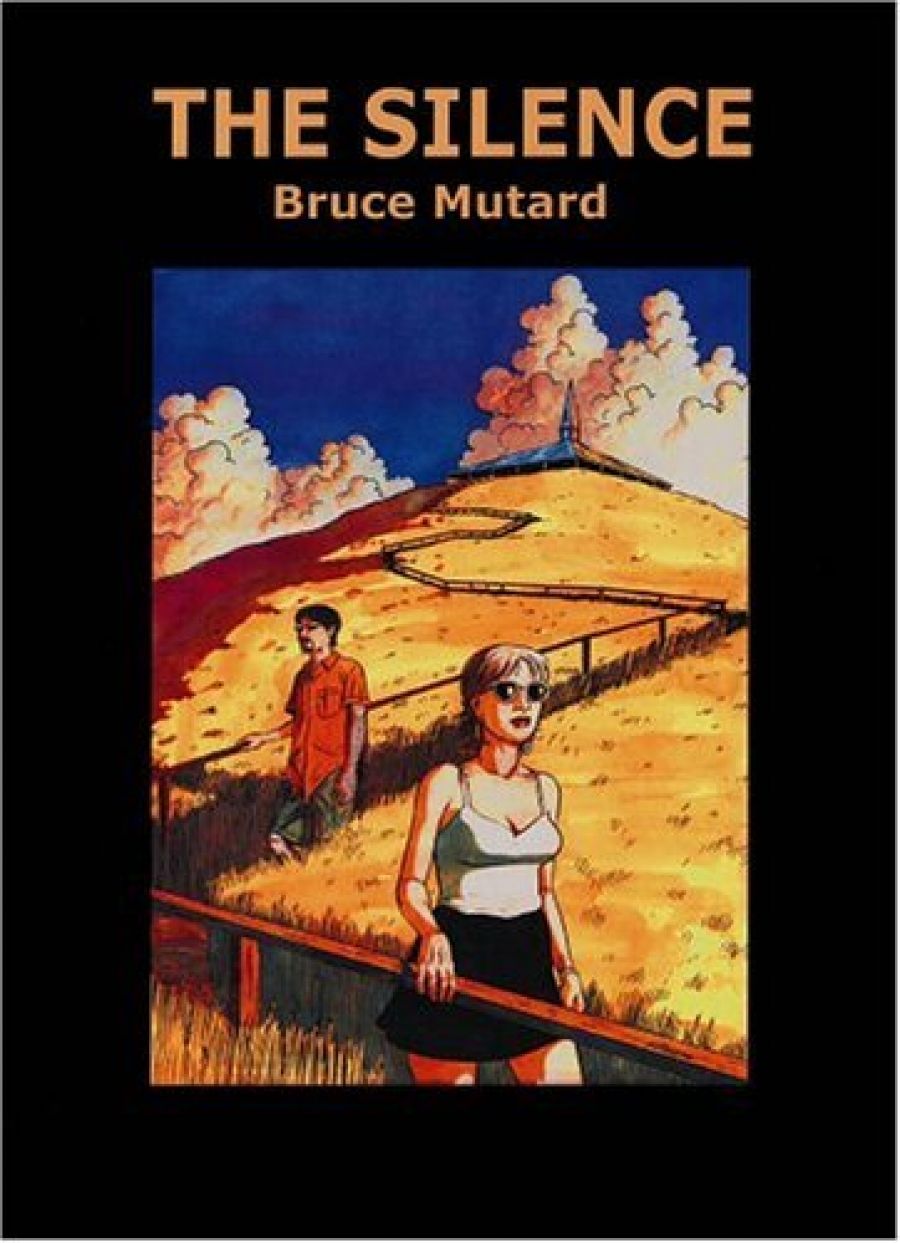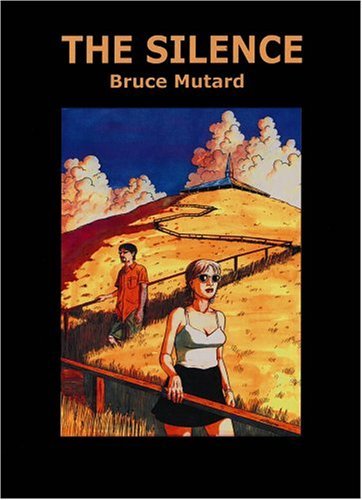
- Free Article: No
- Contents Category: Graphic Novel
- Review Article: Yes
- Article Title: Quiet moments
- Online Only: No
- Custom Highlight Text:
Painter Dmitri Pangalidis stares out over the baking Sydney rooftops as he waits for his partner, Choosy McBride, to come home from the gallery where she works as a curator. The city is besieged by heat and Pangalidis spends his day lounging on the couch, trying to motivate himself. The first five pages of The Silence contain no dialogue, with Pangalidis wasting yet another day at home, frustrated and filled with doubt about his art. These scenes are interspersed with those of McBride’s arduous return to the apartment across the city. Once the characters do speak, Bruce Mutard’s stark, contemplative meditation on art and beauty sets an unsettling tone that is maintained throughout.
- Book 1 Title: The Silence
- Book 1 Biblio: Allen & Unwin, $29.99 pb, 188 pp
- Book 1 Cover Small (400 x 600):

Comparisons between Mutard and the more established American practitioners in the genre are facile but inevitable. Graphic novelists Charles Burns, Adrian Tomine and Daniel Clowes share his minimalist style and ability to use swathes of black effectively. Disappointingly, Allen & Unwin has chosen to promote The Silence as ‘cinema in print’, which reeks of a marketing department’s failure to understand the discrete power of the graphic novel. While it is true that Mutard’s character-heavy storyline unfolds at a sedate pace, the cinematic framing of some shots reveals more about our general ability to see life through a lens than it does about any ham-fisted attempt by the writer–illustrator to score a film tie-in. The Silence resembles an elegiac novel rather than a freeze-frame animation.
Whilst Pangalidis stagnates in Sydney, Choosy McBride is motivated by more commercial concerns. The gallery she manages in Sydney represents major artists. Her highly trained eye leads her on a dual mission to Port Douglas, where she is to curate a new show by reclusive Australian legend Fred Merriweather, who lives on a remote bush property. She is also on a fact-finding mission to locate an unknown artist whose work she has seen at the home of a rich client. Pangalidis decides to accompany her in an attempt to clear his mind and to work out how he will overcome his creative block.
The relationship between McBride and Pangalidis is awkward, often tense. McBride sees dollar signs in every work of art she sees, and worries about the lack of commercial viability in her partner’s work. She refuses to represent him at her gallery, claiming she does not want to appear nepotistic, but the expression on her face says otherwise. Pangalidis senses the truth but avoids a confrontation that he knows could destroy their tenuous relationship. Mutard delineates in broad, subtle strokes the difficulties facing a creative artist living with a salesperson. Cynicism and a fragile belief in the integrity of art prevent Pangalidis from selling out. His partner has already stripped all such compunction from her life.
The narrative takes a strange turn when the couple arrives in Queensland. Everyone is aware of the talented unknown artist, but no one knows who he or she is. The work, displayed in a mysterious prayer-house on top of a hill, is free for anyone to take. McBride goggles at the thought of how much money the art is worth, and cannot understand why none of it is signed or for sale. Pangalidis is stunned into life by the beauty of the work and by the absence of commercial nous. This is something pure, unadulterated by the harsh realities of the art world. Their difference of opinion on whether or not they should take a painting, as they have seen others do, deepens the chasm between them.
Mutard uses the contrasting environments to expose the banality of relationships. Pangalidis and McBride seem to inhabit their own worlds, caught up in their respective travails. They have gotten used to each other, and tolerate annoying habits or tics. Being so removed from civilisation strips their relationship to the bone; Mutard conveys this through their attire. Despite the heat of the city, Pangalidis and McBride are demure around each other at home. They still wear a modicum of clothes. Even when lounging in sunny Port Douglas, they remain fully dressed. It is only when the light, space and silence hit them on a remote beach that they finally divest themselves of the trappings of society and remember their passion for each other. Mutard’s allegory of the city as a hindrance to creative and sexual expression is powerful.
Reclusive artist Fred Merriweather becomes an unwitting catalyst who briefly reverses the couple’s opinions. Pangalidis is impressed by the old cynic, who quickly puts the younger artist’s concerns into perspective. McBride finds him tiring, exhausted, at the end of a creative life that will be of no further use to her.
‘He crapped on about how true art’s supposed to reveal the big “truth” or whatever, and his didn’t; said he failed to realise his vision.’
‘Yeah, that can be a problem; you get a fleeting glimpse of this “truth”, but it always eludes you. That’s why artists keep producing, trying to capture it.’
‘Grasping at straws I call it.’
Mutard asks some troubling questions here. Why bother creating art if it doesn’t communicate? Is the importance of art in society overstated? What is the price of integrity? Is beauty universal? McBride and Pangalidis are complex, fascinating characters through which to muse on such themes. Their relationship is filled with moments of sadness and silence, almost as deafening as what they experience on the beach and in the art they both love for such differing reasons.
This highly accomplished graphic novel does not answer the questions it poses but succeeds in breaking down human anxiety and impotence in the face of nature and raw beauty. Considering that the story revolves around art, Mutard makes a wise and ultimately inevitable choice in portraying the many canvases that appear throughout the narrative. They are all blank.


Comments powered by CComment